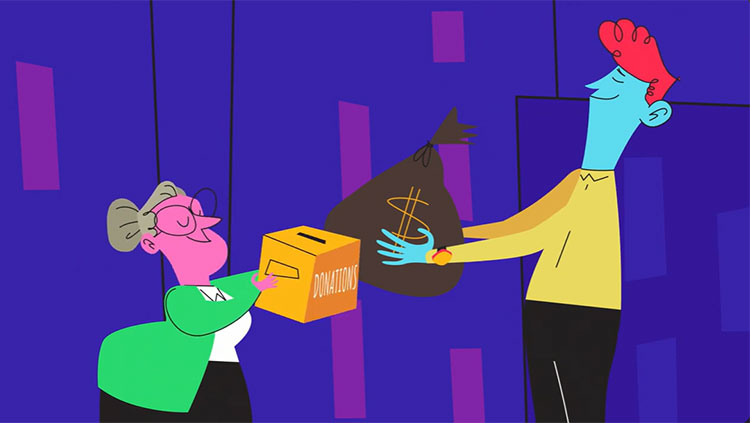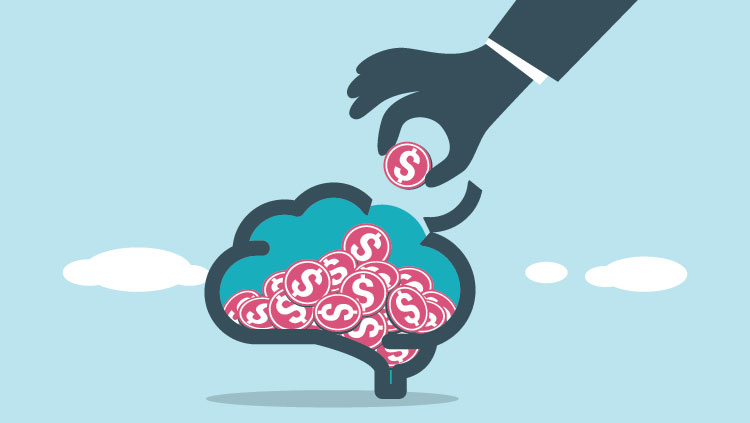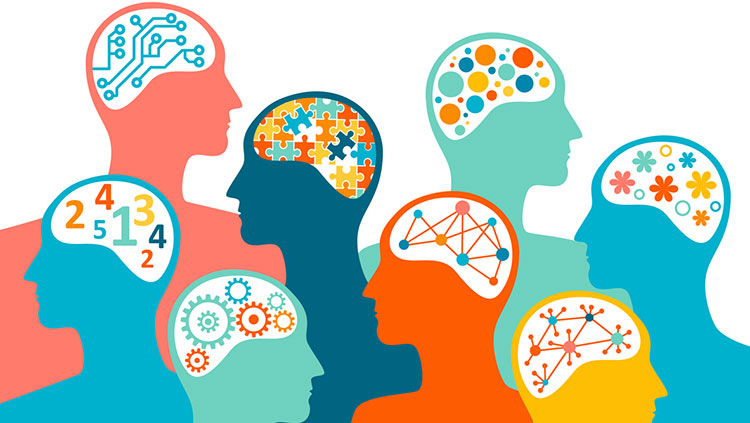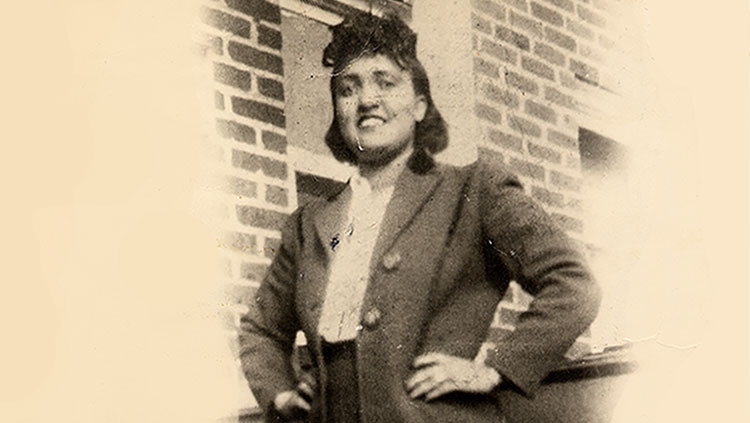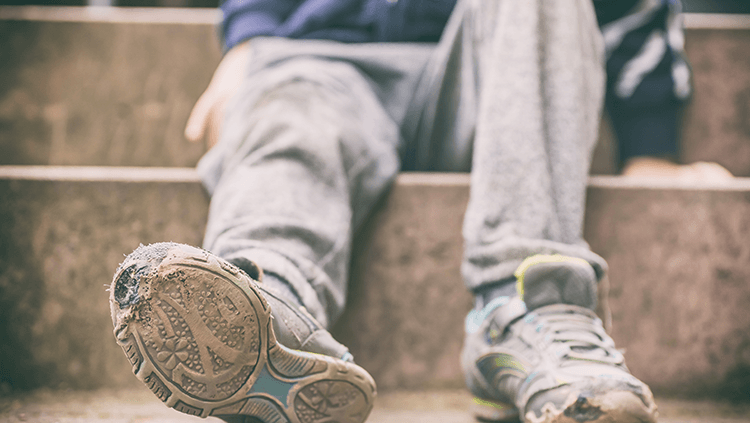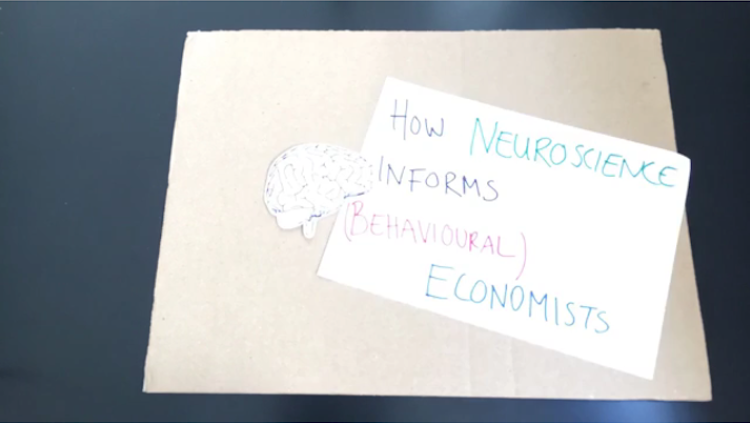Making It Visible: Neuroscience Shines a Light on Solitary Confinement
- Published19 Mar 2019
- Reviewed19 Mar 2019
- Source BrainFacts/SfN
As social animals, our health depends on interactions with others. If placed in isolation, without those connections, our physical and mental health take a hit. Millions suffer from chronic isolation; solitary confinement is the extreme example. The number of people held in solitary varies widely around the world but is nowhere greater than in the US. In the US some 80,000 people spend days, even years, without any physical contact from others.
Michael Zigmond, professor of neurology at the University of Pittsburgh, discusses the health effects of this kind of isolation.
This video is part of a series on Solitary Confinement, presented at Neuroscience 2018 for the Social Issues Roundtable.
Note: Stephanie Cacioppo, assistant professor of in the department of psychiatry and behavioral neuroscience at the University of Chicago, was also a presenter at this panel, however, she declined to have her talk distributed to the public.
CONTENT PROVIDED BY
BrainFacts/SfN
Transcript
I'm Michael Zigmund. I am professor emeritus at the University of Pittsburgh, where for a long time I've studied Parkinson's disease, including the impact of environmental enrichment, and exercise on Parkinson's disease. And largely as a result of our last speaker, Jules Lobel, I came to realize that we had things mixed up, that the experimental group was not the enriched group. It was the isolated group.
And that's how we came to become involved, as we all have been for the last several years, in the issue of isolation.
Speaker 2: Can you speak right into the mic?
Michael Zigmund: Thanks. Okay. Is that a little better?
So, I am the moderator. I'm not allowed to talk very long, but I will use up my, I think, 10 minutes, and then each person will speak for approximately 15 minutes. I'm sitting right here. I'll try to control them, though they're not easily controlled. And then that'll give you five minutes or so to ask questions, or to make comments. And then, we should still have about 15 minutes or so at the end, to have there be a general discussion, and most of us will be able to stay out in the hallway afterwards if there isn't time here.
We're going to be talking about loneliness, and I'll tell you about the kinds of loneliness that are relevant to our presentation.
This is a quote that I came across, by a person I'm about to speak about, and the quote is, "Loneliness is like an iceberg. It goes deeper than we can see," and the person who taught me that quote is John Cacioppo, and this entire symposium is, in a sense, in his memory.
I found his book, which is, Loneliness, which I commend to all of you, soon after it came out in 2016, and I immediately contacted him and told him that I was putting together a proposal for the Society of Neuroscience. Would he participate? And he said, yes, he would participate, but in fact, he was very sick, so he could only hope to still be available for the symposium.
The symposium was not approved by the program committee. This year it was, but sadly, John didn't make it, and so he wasn't able to participate. He is, perhaps, the foremost expert on issues related to loneliness, and as I said, I encourage you to take a look at his book. He was a distinguished professor at the University of Chicago. He founded the Chicago Center for Cognitive and Social Neuroscience. He has a wonderful website for anybody that wants to go deeper into the issue of solitary.
Luckily for me, when I contacted his widow, Dr. Stephanie Cacioppo, to express my condolences, I also asked her, without wanting to be too insensitive, would she be willing to participate in this round table, and kindly, and luckily for all of us, she said, "Yes." So, she will be one of the speakers today.
So, isolation in American society, perhaps uniquely, of all societies in the world. There are three kinds of isolation that one could focus on.
The first are people in nursing homes and people in hospice, and even some people in assisted living. We tend, here in this country, not to live near our relatives and so when we become unable to take care of ourselves, there is often no family member nearby, as there are in many other countries, and so we end up being confined to something like a nursing home. There's two and a half million people in the United States that are in such facilities, and as you can imagine, many of them experience extreme loneliness.
The largest population of people who experience loneliness are people in the general population, people that you probably know and may not have even noticed or realized what they're experiencing. It's estimated that about 20 percent of the people in the United States suffer from loneliness, even if they exist within a community.
The third group is people in solitary confinement. They are not by any means the largest group. They're actually the smallest of these three groups. But, they are experiencing kind of the extreme of isolation. There are, hard for most of you to probably believe, on any given day, 80 thousand people in the United States who are in solitary confinement. Disproportionately, the people in solitary confinement are men, and very disproportionately, they are black.
And so, we are talking about a number of issues here. Today, we are going to focus on solitary confinement, not because the other forms of isolation are unimportant, but because it's the extreme case.
So, just to give you an idea, and our first speaker has, in fact, experienced solitary confinement for no less than 29 years. Solitary confinement involves being in a cell, which is pictured here. It's about the size of a king-size bed. People in solitary confinement spend at least 23 hours every day of every week in solitary. They may, or may not, have an opportunity to exercise, but if they do, it's in another kind of isolation, where they're in a cage and they can do a little bit more moving around.
Solitary confinement is defined as being in solitary for at least 15 days, but there are people who have been in solitary confinement for years and years. In fact, we have Robert, and there are two other people who may want to make some comments before the end of this round table, who have been in solitary for as much as 40 years.
If you can imagine being in a room the size of your bathroom, with no contact with anybody except the guard, who might come and give you food through a slot, or shackle you and take you to the exercise room. It's really almost impossible to imagine.
I'm from Pennsylvania. Richard is from Philadelphia. I'm from Pittsburgh. I'm a little sorry to say that solitary confinement in this country began in Pennsylvania. It began, more specifically, in Philadelphia, a place that was, and is, named Eastern State Penitentiary. And this gives you a picture of the outside of Eastern State, and this is what the inside of Eastern State looks like. This is a relatively recent picture, so you can see that the doors are beginning to fall apart.
I encourage you, if you have an opportunity, to go to Eastern State Penitentiary. It was inspired by Quakers. Quakers are, by and large, wonderful people, and they came up with this idea that if you took individuals who were in prison out of the chaos of prisons of the time and put them in isolation, they would, over the course of several months, experience penitence, and they would reform themselves. Benjamin Franklin was the head of this committee, and in 1829, they built Eastern State Penitentiary.
As I say, it was designed to evoke penitence, and it was opened in 1829. It became the worldwide model. People emulated this. It sounded like such a great idea from a philosophical point of view, it quickly was realized that being in isolation could, and often, or mostly, did cause mental illness. But, nonetheless, Eastern State Penitentiary wasn't closed for 150 years, until 1971.
There have been a number of statements by important bodies and important people to suggest that isolation in solitary confinement was indeed cruel and unusual punishment. The first person that I could find, was a Supreme Court justice, who said in 1890, that there were serious objections to housing people in solitary confinement.
Then, Justice Kennedy, just a few years ago said, "This may constitute cruel and unusual punishment." And the United Nations had a committee that said this seemed to be cruel and unusual punishment, and in some cases, could be likened to torture, and if so, it was prohibited under international law.
And then, just two years ago, Barack Obama, then President, visited a solitary confinement prison, shown here, and he realized that solitary confinement was something that couldn't be tolerated. And he published an op-ed piece, which I recommend to you, in the Washington Post, which was entitled, Why We Must Rethink Solitary Confinement, and in fact, he abolished solitary confinement for minors.
So, three of us here, myself, Richard, and Huda, spend most, if not all, of our time, with animal research, and there has been a long history looking at the effects of enrichment in animals.
In 1966, there was a cover story in Life Magazine, the title of which was, Concentration Camps for Dogs, and that prompted such an outrage in the public, that they pressured the government to start the animal welfare act, which was in the same year, 1966, and then eventually public health policy. And many of you are familiar with the Institutional Animal Care and Use Committee, the IACUCs, that came out of these regulatory bodies.
So, one of the key aspects of these regulations are, that you must house animals in an enriched social environment, unless you go through a very long process, which perhaps many of you have gone through, to get permission. In Rich Smeyne's case, it took him six months to be able to house animals in isolation, and he had to make the case that this was the focus of his research.
I won't go through the details, but there is a very prescribed committee, which includes people outside of the university, that has to approve your housing of animals, and there are severe penalties for failing to comply with these, which could include giving back your research grant money, and even losing your job.
So, if you should publish a paper, which was not approved, where the research was not approved by IACUC, you're in danger of losing your job.
So, there are a number of questions that we will be addressing in the next two hours. The first one is, what are the effects of isolation on the behavior of animals and people, non-human animals, and what are the effects on the brain?
Secondly, can we learn from animal studies, about humans? This is a contentious issue, and I personally have been thrown out of testifying in courts, because I was told by either one of the lawyers, or the judge, that I had nothing to contribute, because all I ever studied were animals.
What do we still need to know, either from human studies or non-human studies, and if solitary confinement, as all of us believe, is indeed, cruel and unusual punishment, what can we do to convince society, prison officials, legislators, that this must be abolished?
And as neuroscientists, what role can we play, both in the collection of data, and in bringing those data before the people that have some possibility?
And finally, in this day, year, of activism, why aren't more of us involved in this struggle? So, I hope that by the end of this Social Issues Round Table, we can have addressed each of these issues.
So, the panelists that you see before you in the order in which they will speak, include Robert King ... and I will let each of them introduce themselves, so I won't take the time to tell you about them, except that Robert King is a member of something called the Angola Three. He spent 29 years in solitary confinement, and he is now a activist, going around the world. He's been to many more countries than I have, talking about solitary confinement, often on behalf of Amnesty International.
Second is Stephanie Cacioppo, who I've already mentioned, at the University of Chicago, who is a social scientist and studies loneliness.
Third will be Huda Akil, a neurobiologist who studies stress, depression, and has a lot to say both about animal research and human research.
Next will be Rich Smeyne, who's a neurobiologist and a collaborator, who has done some of the pioneering work on the effects of isolation versus environmental enrichment in rodent models.
And finally, Jules Lobel, a lawyer from the University of Pittsburgh, a distinguished professor there, who was largely responsible for closing down a large part of the activity that went on in Pelican Bay, which is north of us, here in California.
So, again, thank you for coming, and let me invite Robert to come forward.
Also In Law, Economics & Ethics
Trending
Popular articles on BrainFacts.org


